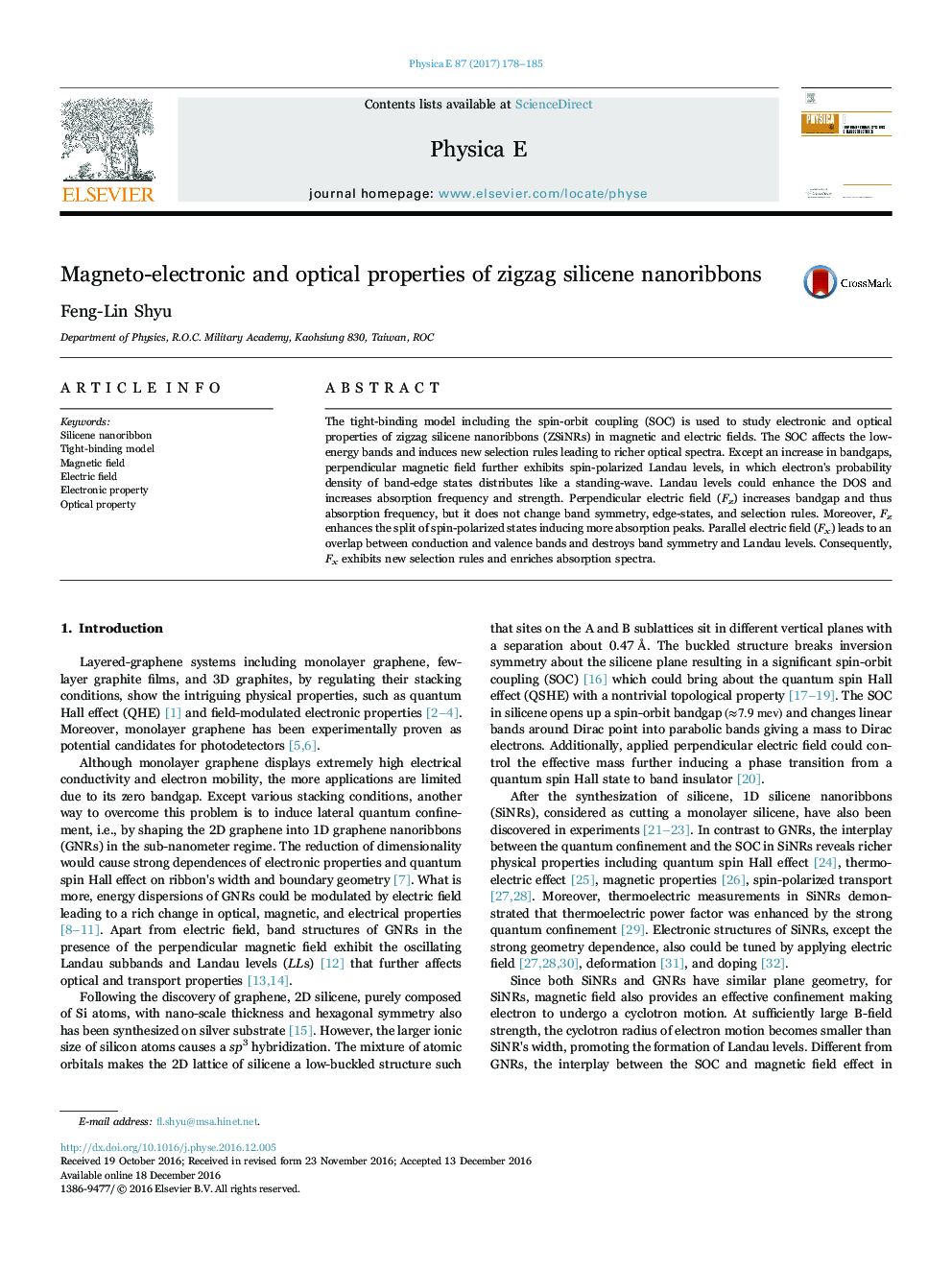| Article ID | Journal | Published Year | Pages | File Type |
|---|---|---|---|---|
| 5450312 | Physica E: Low-dimensional Systems and Nanostructures | 2017 | 8 Pages |
Abstract
The tight-binding model including the spin-orbit coupling (SOC) is used to study electronic and optical properties of zigzag silicene nanoribbons (ZSiNRs) in magnetic and electric fields. The SOC affects the low-energy bands and induces new selection rules leading to richer optical spectra. Except an increase in bandgaps, perpendicular magnetic field further exhibits spin-polarized Landau levels, in which electron's probability density of band-edge states distributes like a standing-wave. Landau levels could enhance the DOS and increases absorption frequency and strength. Perpendicular electric field (Fz) increases bandgap and thus absorption frequency, but it does not change band symmetry, edge-states, and selection rules. Moreover, Fz enhances the split of spin-polarized states inducing more absorption peaks. Parallel electric field (Fx) leads to an overlap between conduction and valence bands and destroys band symmetry and Landau levels. Consequently, Fx exhibits new selection rules and enriches absorption spectra.
Keywords
Related Topics
Physical Sciences and Engineering
Materials Science
Electronic, Optical and Magnetic Materials
Authors
Feng-Lin Shyu,
